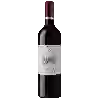
Winery Les Quatre ToursCôtes du Marmandais
This wine generally goes well with
Details and technical informations about Winery Les Quatre Tours's Côtes du Marmandais.
Discover the grape variety: Delrho
Intraspecific crossing obtained in 1959 between Alphonse Lavallée and Csaba pearl. Delrho has been registered in the Official Catalogue of Table Grape Varieties, list A1, since 1986, but today it is practically not multiplied.
Informations about the Winery Les Quatre Tours
The Winery Les Quatre Tours is one of of the world's great estates. It offers 38 wines for sale in the of Côtes du Marmandais to come and discover on site or to buy online.
The wine region of Côtes du Marmandais
Côtes du Marmandais is a satellite district of the Bordeaux wine region in Southwest France. It owes its name to the town of Marmande at its centre, which Lies on the North bank of the Garonne. The appellation AOC Côtes du Marmandais covers red, white and rosé wines produced from grapes grown in defined areas of the parishes around Marmande. The Garonne River divides the Marmande district into two Parts, the north and the south, which are eastern extensions of the Entre-deux-Mers and Graves regions respectively.
The wine region of South West
The South-West is a large territorial area of France, comprising the administrative regions of Aquitaine, Limousin and Midi-Pyrénées. However, as far as the French wine area is concerned, the South-West region is a little less clear-cut, as it excludes Bordeaux - a wine region so productive that it is de facto an area in its own right. The wines of the South West have a Long and eventful history. The local rivers play a key role, as they were the main trade routes to bring wines from traditional regions such as Cahors, Bergerac, Buzet and Gaillac to their markets.
The word of the wine: Muscaté
Wine reminiscent of the characteristic aromas of fresh muscat grapes.











